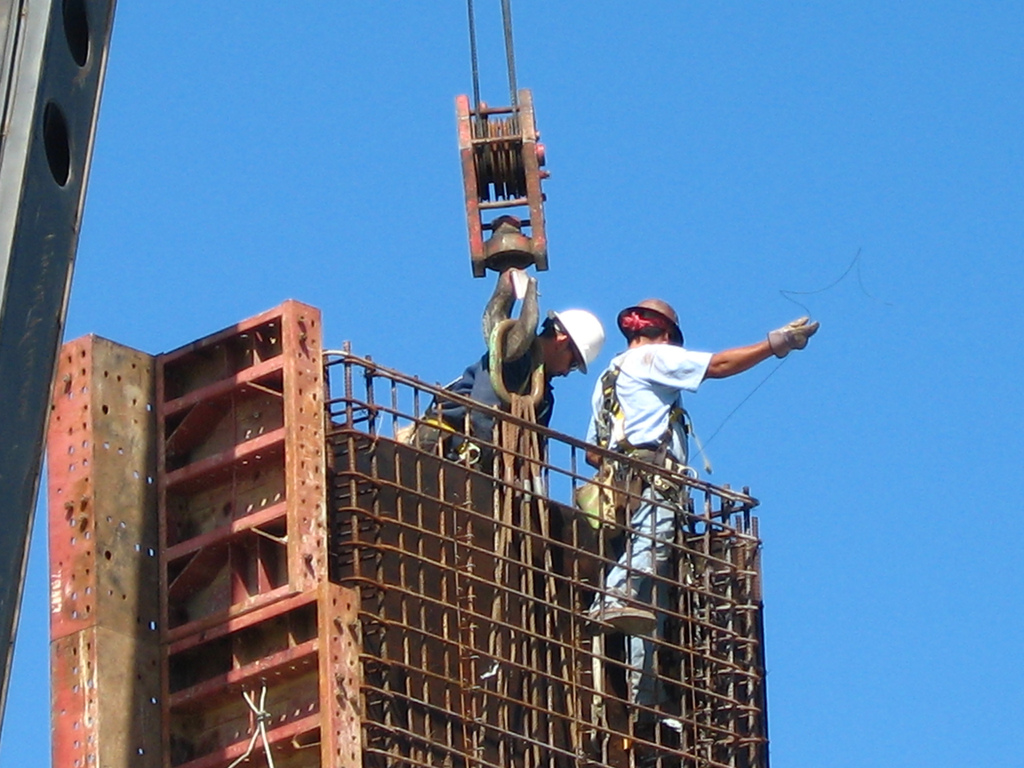Both real gross domestic product (GDP) and nonresidential fixed investment expanded during the third quarter, according to an analysis by Associated Builders and Contractors (ABC) of a release from the Bureau of Economic Analysis. GDP expanded 1.5% (seasonally adjusted annual rate) during the third quarter while nonresidential fixed investment expanded by 2.1% during that period, both building on positive results from the previous quarter.
The bureau estimated that GDP expanded 3.9% during the year's second quarter, while nonresidential fixed investment was revised upward to a 4.1% increase from an initial estimate of a 0.6% decrease. This marks the second consecutive release in which the previous quarter's nonresidential fixed investment figure was amended from negative to positive. Investment in nonresidential structures fell by 4% after growing by 6.2% in the second quarter.
"The U.S. economy is not quite as bad as the headline GDP number suggests," said ABC Chief Economist Anirban Basu in a statement. "Private final demand, an indicator that represents sales to nongovernmental domestic purchasers, expanded by 3.2% in the third quarter. Many economists consider this the most telling and persistent aspect of GDP, suggesting that the economy is healthier than some might suspect.
"The current quarter was heavily impacted by a foreseeable inventory adjustment, a stronger dollar and a weakening global economy," Basu said. "The fact that the recovery remains in place is reflected in fixed investment data, including the categories that relate most directly to nonresidential construction. While it is true that investment in structures slipped 4%, this largely appears to be a statistical give-back from the second quarter's better than 6% performance. Other data indicates ongoing momentum in nonresidential construction, which should be more apparent during ensuing GDP releases.
"The recovery will continue to be led by consumers," Basu said. "Interest rates will also feature prominently in terms of determining the extent to which the recovery will be sustained in 2016 and beyond. For now, ultra-low interest rates are inducing people to invest in order to generate financial yields. This has been a bonus for nonresidential construction, but potentially may be triggering over investment in certain construction segments."

Performance of key segments during the third quarter:
- Personal consumption expenditures added 2.19% to GDP after contributing 2.42% in the second quarter.
- Spending on goods grew 4.5% from the second quarter.
- Real final sales of domestically produced output increased 2.9% for the third quarter after a 3.7% increase in the second quarter.
- Federal government spending increased 0.2% in the third quarter after remaining unchanged in the second quarter.
- Nondefense spending increased 2.8% after decreasing by 0.5% in the previous quarter.
- National defense spending fell 1.4% after inching 0.3% higher in the second quarter.
- National defense spending fell 1.5% after growing 1% in the first quarter.
- State and local government spending expanded 2.6% during the third quarter after an increase of 4.3% in the second.
To view the previous GDP report, click here.
Related Stories
| Jun 30, 2014
Philip Johnson’s iconic World's Fair 'Tent of Tomorrow' to receive much needed restoration funding
A neglected Queens landmark that once reflected the "excitement and hopefulness" at the beginning of the Space Age may soon be restored.
| Jun 30, 2014
Research finds continued growth of design-build throughout United States
New research findings indicate that for the first time more than half of projects above $10 million are being completed through design-build project delivery.
| Jun 30, 2014
Narrow San Francisco lots to be developed into micro-units
As a solution to San Francisco’s density and low housing supply compared to demand, local firms Build Inc. and Macy Architecture each are to build micro-unit housing in a small parcel of land in Hayes Valley.
| Jun 30, 2014
Arup's vision of the future of rail: driverless trains, maintenance drones, and automatic freight delivery
In its Future of Rail 2050 report, Arup reveals a vision of the future of rail travel in light of trends such as urban population growth, climate change, and emerging technologies.
| Jun 30, 2014
4 design concepts that remake the urban farmer's market
The American Institute of Architects held a competition to solve the farmer's markets' biggest design dilemma: lightweight, bland canopies that although convenient, does not protect much from the elements.
| Jun 30, 2014
Harvard releases the State of the Nation’s Housing 2014
Although the housing industry saw notable increases in construction, home prices, and sales in 2013, household growth has yet to fully recover from the effects of the recession, according to a new Harvard University report.
| Jun 30, 2014
OMA's The Interlace honored as one of the world's most 'community-friendly' high-rises
The 1,040-unit apartment complex in Singapore has won the inaugural Urban Habitat award from the Council on Tall Buildings and Urban Habitat, which highlights projects that demonstrate a positive contribution to the surrounding environment.
| Jun 30, 2014
Work starts on Jean Nouvel-designed European Patent Office in the Netherlands [slideshow]
With around 80,000 sm and a budget of €205 million self-financed by the EPO, the complex will be one of the biggest office construction sites ever in the Netherlands.
| Jun 30, 2014
Growth of crowdfunding, public-private partnerships among top trends in architecture marketplace
A new report by the American Institute of Architects highlights several emerging trends in the architecture marketplace, including the growth of the P3 project delivery model and designing for health.
| Jun 30, 2014
Report recommends making infrastructure upgrades a cabinet-level priority
The ASCE estimates that $3.6 trillion must be invested by 2020 to make critically needed upgrades and expansions of national infrastructure—and avoid trillions of dollars in lost business sales, exports, disposable income, and GDP.

















